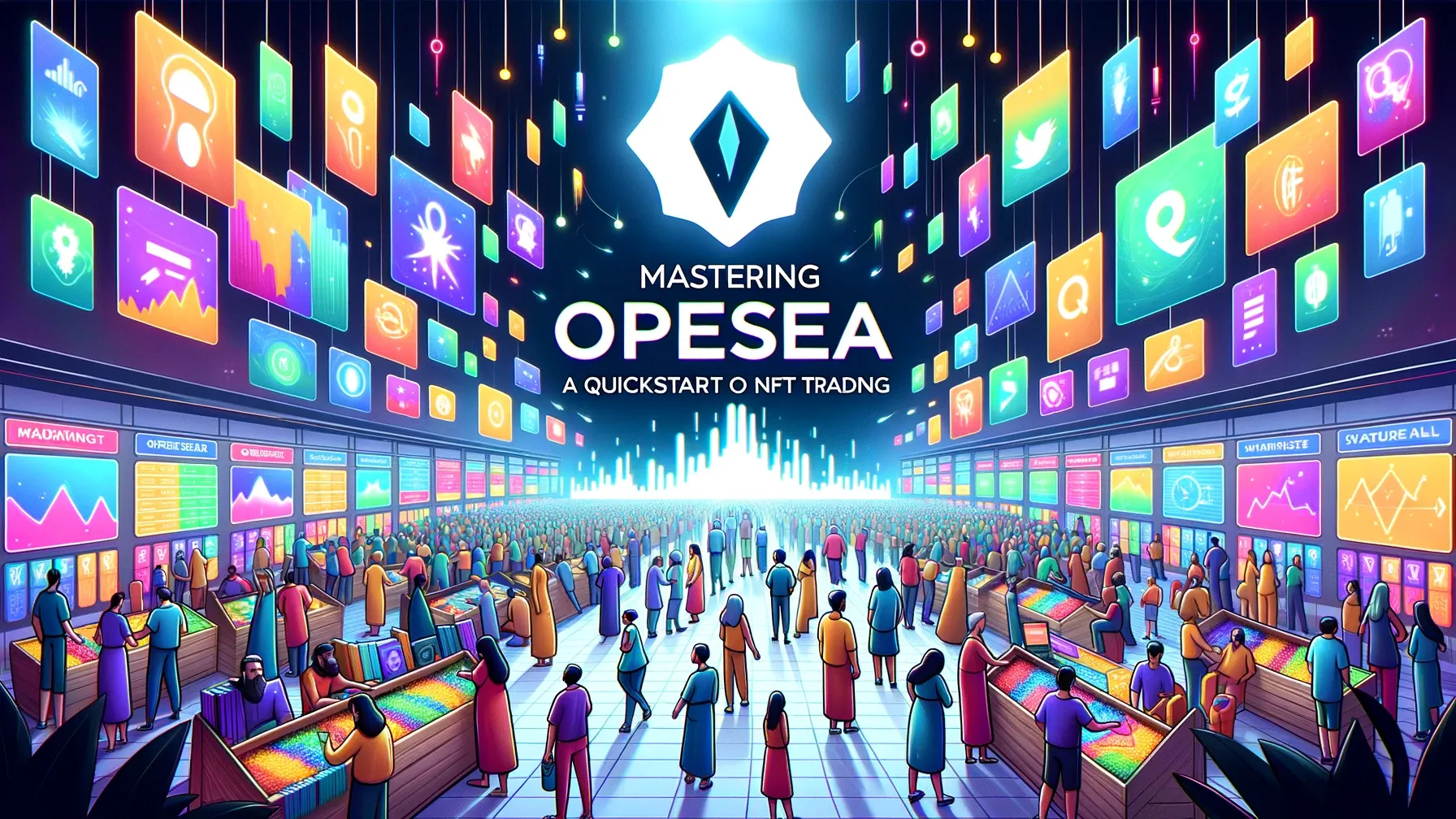
Posted on over 1 year ago
•
Updated
Mastering OpenSea: A Quickstart Guide to NFT Trading
Non-fungible tokens, or NFTs, are playing a major role in bringing Ethereum to the mainstream. People around the globe have been minting their own NFTs representing digital art, photography, music, collectibles, in-game items, and even tweets on blockchains like Ethereum. In recent months, there has also been the rise of so-called “profile-picture NFTs” which usually are released as a set of 10,000, and range from the original CryptoPunks, to penguins, cats, dogs, monkeys, rats, and more. In this blog, we'll explore one of the world's leading NFT marketplaces, OpenSea.
Sub actions
Introduction to NFTs and OpenSea
The digital world is evolving rapidly, and at the forefront of this evolution are Non-Fungible Tokens (NFTs). These unique digital assets, verified through blockchain technology, have opened up a world of possibilities, from art and music to collectibles and even real estate. OpenSea stands as the largest and most popular marketplace for trading these tokens, providing a platform for creators, collectors, and traders alike. With the growth of digital art and the rising interest in decentralized assets, understanding NFTs and how OpenSea operates is crucial for anyone wanting to tap into this digital renaissance.
Setting up Your Digital Wallet
Before diving into the NFT marketplace on OpenSea, one must first set up a digital wallet. A digital wallet serves as your personal gateway to buy, sell, and store NFTs securely. It not only holds your NFTs but also manages your cryptocurrencies, which are typically used for transactions in the NFT space. Setting up and securing your wallet is paramount, as it's the bridge between you and your digital assets on platforms like OpenSea. Here's a concise guide to getting started.
Installing Metamask
Always download MetaMask from the official website or trusted app stores to avoid malicious software. Visit MetaMask.io to find official download links.
Once installed, click on the MetaMask fox icon in your browser's extension area.
Choose "Create a Wallet" or "Import Wallet" if you're restoring an existing one.
For new users, set a strong password.
Fund your wallet
Next you will need to fund your MetaMask wallet with ETH. Check out this post to learn more about buying and sending ETH to your account.
Now that MetaMask is all set, you’re ready to start exploring OpenSea!
Connecting Your Wallet
Once you visit OpenSea.io, you'll see an option to explore/create an NFT, a few exclusive OpenSea drops, trending NFTs, resources to get started and an option to browse by categories.
To create an OpenSea account, simply connect your MetaMask wallet. Click on the wallet icon at the top-right corner; a list of supported wallets will show up. Select MetaMask from the list.
Once you've connected, finish setting up your profile by adding a username, profile image, cover etc. You'll need to 'sign' each update through your MetaMask account to apply the changes to your OpenSea account.
Exploring and Purchasing an NFT
You can start exploring the NFTs that are minted by creators from across the world through browsing by category or clicking on Marketplace > All NFTs.
To purchase an NFT, simply select an asset from the list. You can also apply filters to sort by price, categories, chains and more. Click on “Buy Now,” agree to the OpenSea terms, and click “Checkout.”
MetaMask will pop up to confirm your transaction, showing you the gas costs for completing the transaction. After you click accept, you wait a few moments for your purchase to confirm on the Ethereum blockchain. You can click the Etherscan link to make sure, and voila, the asset will then show up in your MetaMask wallet and in your OpenSea profile.
Minting an NFT
There's a simple 4-step process for minting your first NFT collection:
As we've already set up a wallet, simply head over to the “Create” section to add your assets. You'll need to add social links, an appealing description, profile, and banner images, as well as set a secondary sales fee. You can choose between auctions, fixed-price listings, and declining-price listings.
Here's a quick rundown of how it's like to mint your own NFT:
Create a collection
You'll have to add some details such as images, name, URL, description, blockchain you're adding the NFT to, payment tokens etc.
Add a new item to your collection
Here you'll need to add description and other details related to the specific item such as supply limit.
Set prices and post your listing
You can set a fixed price, highest bid, or bundle for the NFT listing.
Confirm from your wallet
Finally, sign the transaction from your wallet, which will require gas fees.
Once you're done, your item will be listed for sale on the marketplace.
Congratulations on minting your first NFT!
Comments
No comments yet
Would you like to make the first comment?